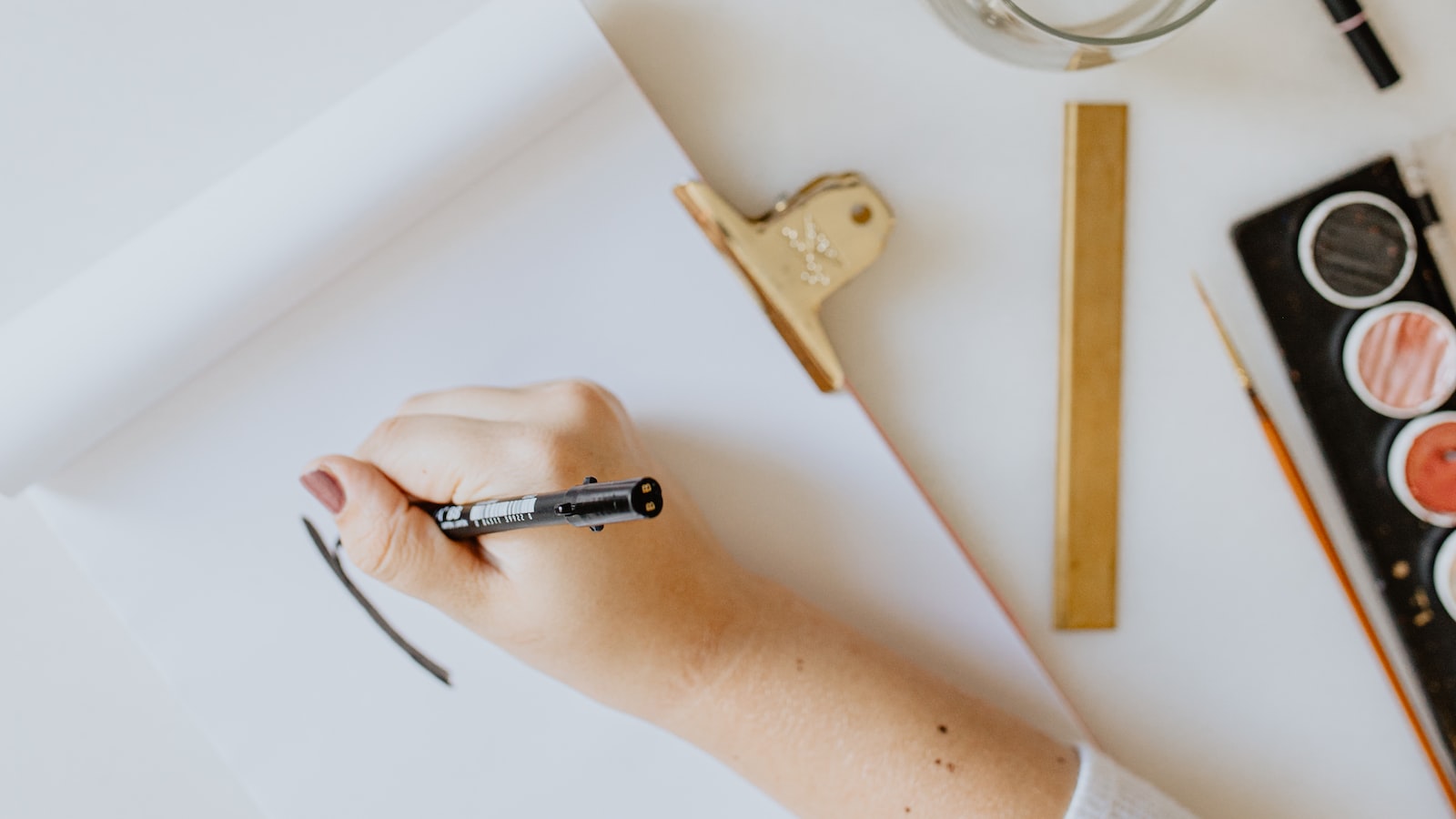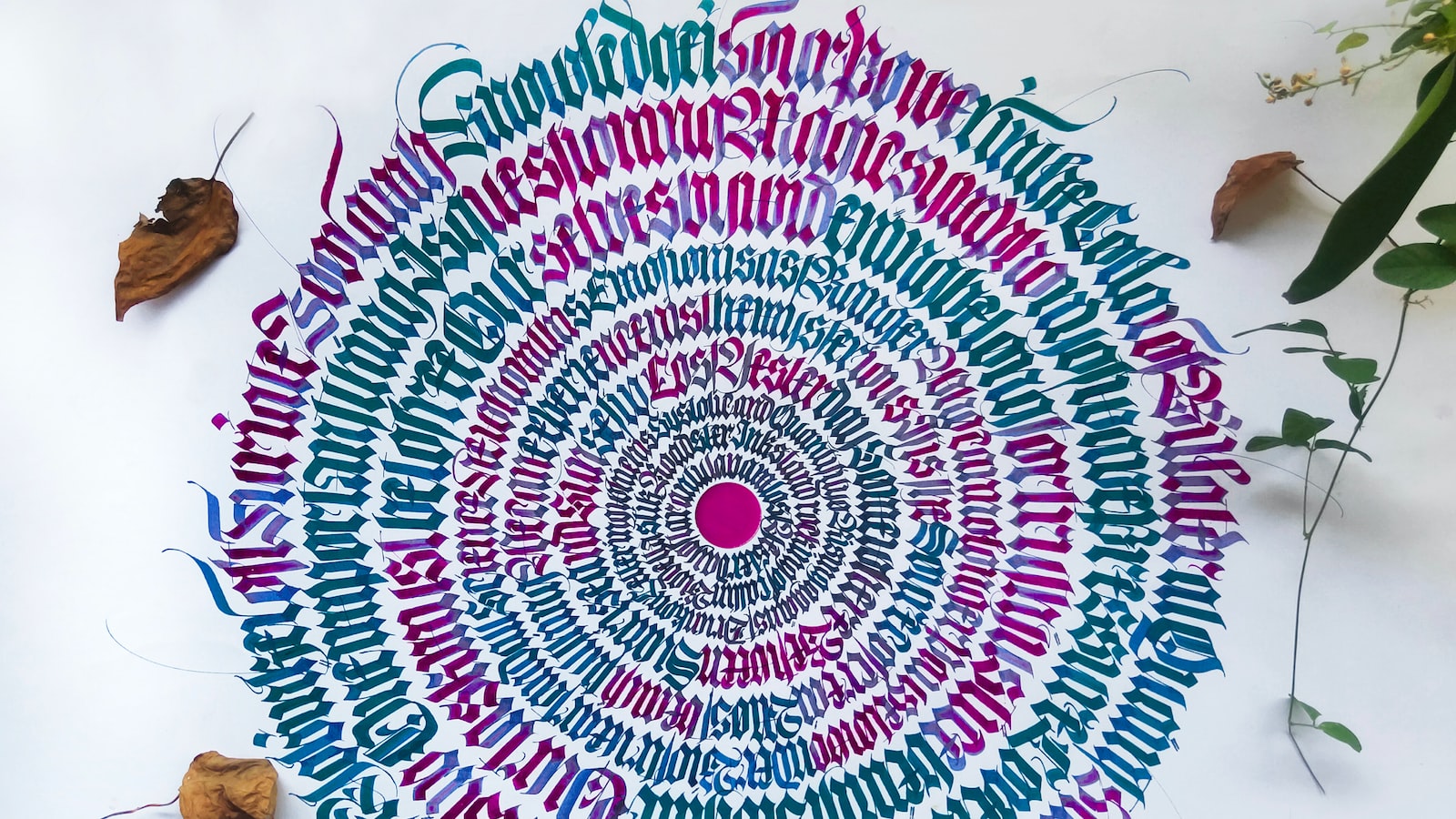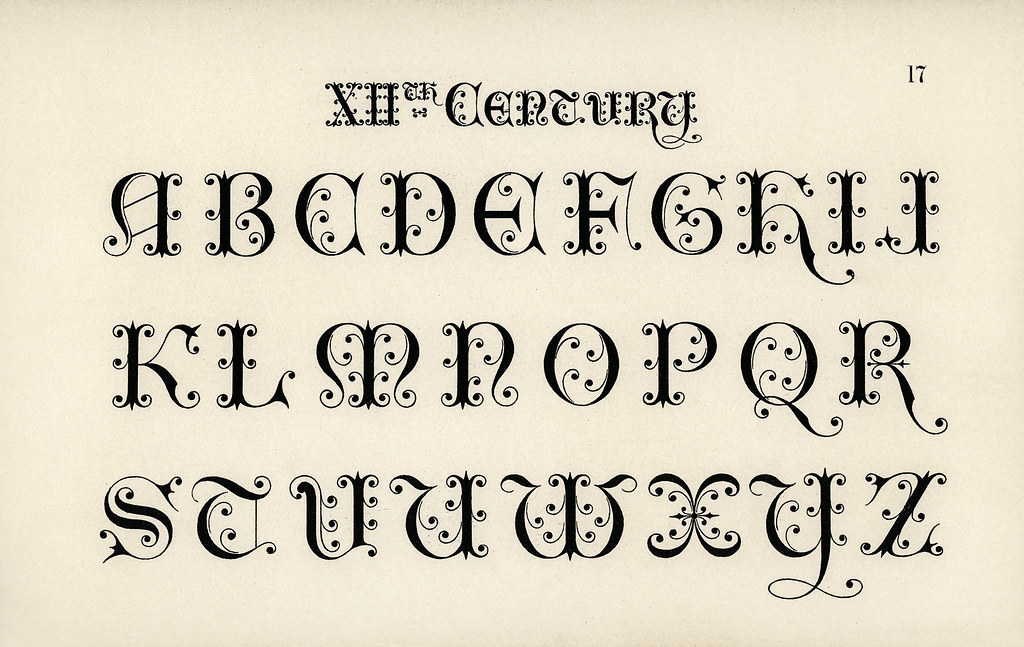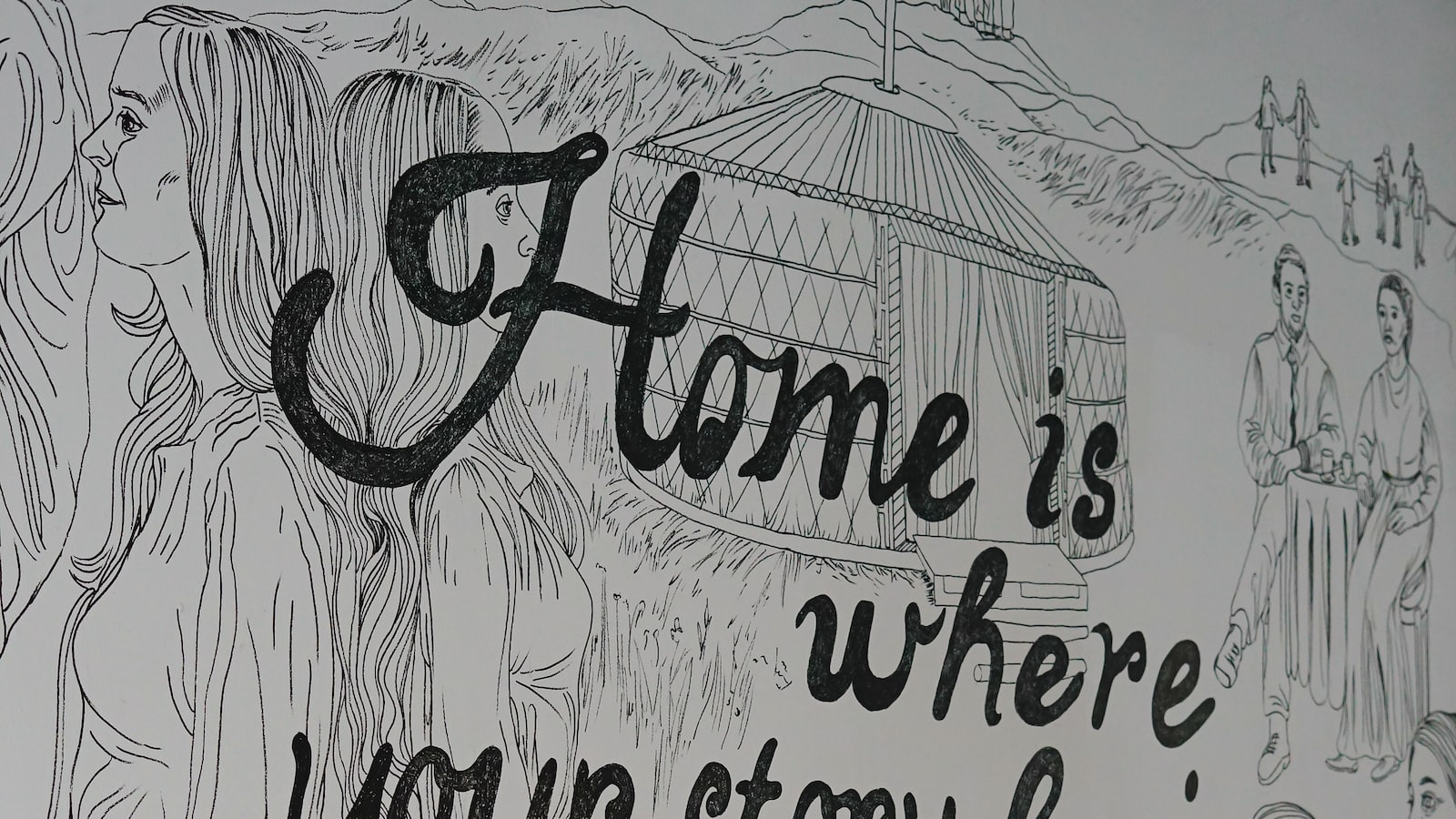Welcome, fellow art enthusiasts, to a captivating journey that transcends time and unveils the mystifying realm of calligraphy! In our quest to revitalize this ancient art, we invite you to immerse yourselves in the intriguing world where stories are whispered through strokes of ink, where artistic prowess dances effortlessly upon the canvas of paper, and where letters become more than mere words – they become poetry. Prepare to be spellbound as we embark on a voyage that unearths the centuries-old secrets of calligraphy, breathing fresh life into its graceful elegance. Join us, as we decode the eloquent script written by the masterful hands of calligraphers and discover the mesmerizing tales these ancient characters silently whisper to us. Step into the realm where beauty and significance are meticulously intertwined, and where an art lost in time eagerly awaits its rediscovery. Welcome to the enthralling world of calligraphy, where tradition and innovation converge to create a symphony that resonates with the souls of both the past and present.
Headings:

Headings are an essential element when structuring content on a webpage. They serve as signposts, guiding readers through the different sections and helping them to navigate the information effectively. By using headings, you can break down your content into meaningful parts and make it more readable for your audience.
When adding headings to your HTML document, it is important to use the appropriate heading tags, such as
for the main title and
,
,
, and so on for subheadings. This hierarchical structure signals the importance and relationship between different sections, allowing both users and search engines to understand and categorize your content more efficiently.
,
, and so on for subheadings. This hierarchical structure signals the importance and relationship between different sections, allowing both users and search engines to understand and categorize your content more efficiently.
Headings not only improve the overall readability of your webpage but also contribute to its accessibility. They help users who rely on screen readers or have visual impairments to navigate through the content more easily. When crafting headings, remember to keep them concise, descriptive, and relevant to the content they precede. Use a hierarchical approach to create a clear and organized structure, ensuring that each heading accurately reflects the topic it introduces. By using bold formatting, you can highlight important keywords and make your headings visually stand out, drawing attention to key sections of your content.
– The Rich History and Evolution of Calligraphy: Unearthing the Origins and Influence

Calligraphy, a timeless art form that captures the essence of culture and tradition, has a rich and fascinating history that stretches back thousands of years. The origins of calligraphy can be traced back to ancient civilizations such as Egypt, China, and Mesopotamia, where it emerged as a means of communication and documentation before the invention of the printing press.
One of the earliest forms of calligraphy can be found in ancient Egypt, where hieroglyphs were meticulously engraved onto papyrus scrolls. These intricate designs conveyed not only written language but also the emotions and beliefs of the Egyptian people. In China, calligraphy evolved into a revered art form during the Han dynasty, where skilled calligraphers used brushes and ink to create exquisite characters on silk and paper. The strokes and curves of each character were meticulously crafted to express the writer’s individuality and personal style.
Over time, calligraphy spread to different parts of the world, each region adding its unique touch to this beautiful art form. In Japan, calligraphy, known as Shodo, became an integral part of Zen Buddhism, reflecting the ideals of simplicity, discipline, and mindfulness. Arabic calligraphy, with its intricate designs and flowing lines, became a powerful tool not only for writing but also for architectural decoration. The influence of calligraphy can be seen in the beautiful illuminated manuscripts of medieval Europe, where monks meticulously transcribed religious texts and embellished them with intricate lettering and delicate illustrations.
The evolution of calligraphy has seen it adapt to different cultures and artistic styles, yet its core essence of precision and aesthetic beauty remains unchanged. Today, calligraphy continues to captivate and inspire countless individuals, from professional calligraphers to those who simply appreciate its timeless elegance. It serves as a reminder of our connection to the past and the enduring power of the written word. So, let us continue to honor and celebrate the rich history of calligraphy, unearthing the origins and influence that have made it the revered art form it is today.
– Exploring the Different Styles and Techniques in Calligraphy: From Classic to Modern

Calligraphy is an exquisite art form that has evolved over centuries, encompassing a wide range of styles and techniques. From the traditional and ornate classic calligraphy to the sleek and contemporary modern styles, there is something for everyone to explore and appreciate.
In classic calligraphy, artists use a variety of tools such as quills, brushes, and nib pens to create intricate letterforms. This style is often characterized by its elegant, flowing lines and meticulously crafted details. Some of the popular classic calligraphy styles include:
1. Blackletter: Also known as Gothic script, this style originated in medieval Europe and features bold, angular strokes that give the text a distinctively Gothic appearance.
2. Copperplate: A graceful and delicate style, characterized by its fine, pointed nib pen strokes that create beautiful variations in line width.
3. Uncial: Originating from ancient Rome, Uncial calligraphy has a round, looping style with compact letterforms, often used in illuminated manuscripts.
On the other hand, modern calligraphy embraces a more experimental and expressive approach. Artists often incorporate a wide range of materials and techniques, pushing the boundaries of traditional forms. Some unique modern calligraphy styles include:
1. Brush calligraphy: Using a brush or brush-tipped pen, artists create bold, dynamic letterforms with a distinct brush texture.
2. Modern script: A contemporary take on cursive writing, modern script calligraphy brings a playful and whimsical touch to the art form, with exaggerated looped letters and stylish flourishes.
3. Digital calligraphy: Expanding the possibilities of calligraphy, digital techniques allow artists to create intricate designs using digital tools such as tablets and software.
Whether you have a penchant for the classic elegance of traditional calligraphy or are drawn to the contemporary flair of modern styles, exploring the diverse world of calligraphy is a journey filled with beauty and creativity.
– Embracing Calligraphy in the Digital Age: Tips for Combining Traditional and Digital Tools

In today’s digital age, calligraphy has found a way to coexist harmoniously with modern technology. Embracing the fusion of traditional and digital tools opens a whole new world of creative possibilities. Here are some tips to help you navigate this delightful blend:
1. Begin with the basics: Before diving into the digital realm, it’s crucial to develop a solid foundation in traditional calligraphy. Start by honing your skills with dip pens, brush pens, or fountain pens. Experiment with different lettering styles and strokes to understand the essence of this timeless art form.
2. Explore digital calligraphy tools: Once you have mastered the art of traditional calligraphy, it’s time to introduce digital tools into your repertoire. There are various software and applications available that can enhance your calligraphy journey. Some popular options include Procreate, Adobe Illustrator, and Calligraphy and Lettering Arts Society’s online programs.
3. Optimize your workspace: To seamlessly integrate traditional and digital tools, create an efficient workspace. Use a sturdy desk that accommodates your calligraphy tools and has enough space for your digital tablet or computer. Consider investing in an adjustable tablet stand to find the perfect ergonomic position.
4. Combine physical and digital elements: Blend the tactile experience of traditional calligraphy with the endless possibilities of digital mediums. Start by creating your lettering piece using traditional tools, then scan or photograph it to import into your digital software. From there, you can experiment with colors, effects, and typography to enhance your artwork.
Whether you are a seasoned calligrapher or just starting your journey, embracing calligraphy in the digital age can be an enriching experience. By merging traditional and digital tools, you can unlock a whole new level of creativity, while staying connected to the timeless beauty of calligraphy.
– Preserving the Beauty of Calligraphy: Nurturing the Art for Future Generations

Preserving the beauty of calligraphy entails more than just admiring its elegant strokes and graceful curves. It involves nurturing this ancient art form, ensuring its survival for future generations to appreciate and cherish. Calligraphy holds a significant place in our history, transcending boundaries of time and culture. Its ability to capture the essence of words and convey emotions with every stroke of the pen is truly mesmerizing.
To nurture the art of calligraphy, we must first acknowledge its rich heritage and understand its various styles and techniques. From the intricate Persian script to the bold strokes of Chinese calligraphy, each style has its own unique beauty and nuances. By immersing ourselves in the history and cultural significance of calligraphy, we can truly appreciate its multifaceted nature and pass down this knowledge to future enthusiasts.
Furthermore, nurturing the art of calligraphy involves providing opportunities for aspiring artists to learn and practice this ancient craft. Supporting calligraphy workshops, classes, and exhibitions not only allows novices to hone their skills but also provides a platform for experienced artists to share their expertise. By fostering a community of calligraphers, we can ensure that the art form continues to evolve and thrive.
In addition to education and practice, technology can play a crucial role in preserving the beauty of calligraphy for future generations. Using digital platforms to showcase calligraphy masterpieces, creating online tutorials, and developing innovative tools can broaden the reach of this traditional art form. Embracing the advancements of the digital age while staying true to the essence of calligraphy can inspire a new generation of artists to explore and expand the boundaries of this timeless craft.
By nurturing the art of calligraphy, we not only preserve a valuable aspect of our cultural heritage but also foster the creativity and expression of future generations. Let us continue to celebrate this remarkable art form, ensuring that the beauty of calligraphy remains alive and cherished, transcending time and captivating the hearts of generations to come.
To Wrap It Up
In conclusion, “Revitalizing the Ancient Art: Unveiling the Intriguing World of Calligraphy” has brilliantly acquainted us with the captivating realm of this timeless craft. From its humble origins to its modern resurgence, we have delved deep into the intricacies that make calligraphy an artform like no other.
Throughout the video, we witnessed the undeniable passion and dedication of master calligraphers, who breathe life into their strokes and ink. Their artistry effortlessly transforms letters into elegant compositions, demonstrating that calligraphy is more than just handwriting – it is a harmonious fusion of skill, creativity, and self-expression.
As we observed the graceful movements of skilled practitioners, we uncovered the painstaking attention to detail required for calligraphy to truly flourish. Every stroke carries meaning and intention, with each letter telling a unique story. It is a reminder of the beauty that can be found in the most minute details, urging us to slow down and appreciate the artistry that surrounds us.
Moreover, this video has demonstrated that calligraphy serves as a powerful bridge between cultures and time periods. In a world characterized by rapidly evolving technology, calligraphy stands as a testament to the enduring appeal of traditional arts. It evokes a sense of nostalgia while simultaneously inspiring innovation, as artists continue to experiment with contemporary styles and techniques.
With each pen stroke, calligraphers transfer their emotions and thoughts onto the canvas, creating a lasting impression that resonates with viewers. It reminds us of the importance of self-expression, and how it can transcend language and cultural barriers.
In conclusion, “Revitalizing the Ancient Art: Unveiling the Intriguing World of Calligraphy” has given us a glimpse into a world that combines beauty, history, and immeasurable skill. The video has kindled a newfound appreciation for calligraphy, reminding us to embrace the traditions that define our past while embracing the boundless possibilities of the future.
So, let us embark on our own creative journeys, wielding our pens with reverence and curiosity, as we rediscover the timeless magic that lies within the art of calligraphy.
